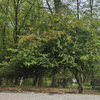Alnus glutinosa
basic
11 years ago
More Discussions
There's a local nursery that has a large container grown Black Alder at a very decent price. They typically do a pretty good job with their container stock, and I've got a need for a fast growing deciduous tree that can handle sandy soil with a hot southern exposure. I've read that this tree, while having a preference for wet/moist conditions, can handle what I've described above. Has anyone tried growing Black Alder on dry soils in full sun? I can get water to it, but I definitely don't need another tree that I have to baby. I've got plenty of those. ;)





whaas_5a
basicOriginal Author
Related Professionals
Rancho Cordova Landscape Architects & Landscape Designers · Newcastle Landscape Architects & Landscape Designers · Roxbury Crossing Landscape Architects & Landscape Designers · Fairfield Landscape Contractors · Hampton Bays Landscape Contractors · Haverhill Landscape Contractors · Las Vegas Landscape Contractors · Sun City Center Landscape Contractors · View Park-Windsor Hills Landscape Contractors · Webster Groves Landscape Contractors · Bonita Siding & Exteriors · Worcester Siding & Exteriors · Foothill Farms Decks, Patios & Outdoor Enclosures · Racine Decks, Patios & Outdoor Enclosures · Decks, Patios & Outdoor Enclosureswisconsitom
whaas_5a
wisconsitom
viburnumvalley
basicOriginal Author
whaas_5a
basicOriginal Author
basicOriginal Author
greenlarry
whaas_5a
Embothrium
basicOriginal Author
whaas_5a
lucky_p
basicOriginal Author
Dzitmoidonc